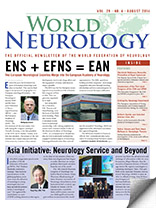IN MEMORIAM
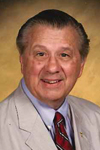
David G. Kline, MD, FAANS, FACS
By David G. Kline MD FAANS, FACS
This year, we celebrate the 100th anniversary of the death of an extraordinary individual Silas Weir Mitchell (SWM), 1829-19141. He was not only a celebrated neurologist, but also a classic experimental physiologist, a critic of insane asylums as well as an innovative therapist for neuroasthenia or what was known in those days as the “vapors.” He authored many poems and works of fiction where his descriptions of characters with mental disorders were both accurate and unique2,5,6. (See Figure 1.)
SWM was born and raised in Philadelphia, a son of Dr. John Kersley Mitchell, a graduate of the University of Pennsylvania Medical School and member of the Jefferson faculty, and the third of nine children borne by Sarah Matilda Henry. He was raised in a family setting stressing versatility in reading literature as well as writing and reciting poetry8. He went to Penn as an undergraduate, but was a desultory student, preferring reading and billiards to his studies. He left after several years to help his family because his father had fallen ill. Even though Mitchell felt SWM had little aptitude for medicine, he entered Jefferson Medical School in 1848, graduating in 1850 at the age of 21.
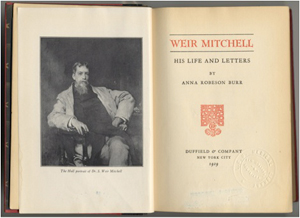
Figure 1. Frontispiece of A.R. Burr’s book, “Weir Mitchell: His Life and Letters,” including portrait of Silas Weir Mitchell, published in 1929 by Duffield and Company, New York.
SWM and his sister, Elizabeth, went to Europe where he spent time with Claude Bernard, the Parisian physiologist who taught him “if you need an answer, do an experiment.” He applied for an internship at Pennsylvania Hospital, but was turned down for political reasons connected with his father. He joined his father’s practice and then assumed it when he retired in 1855.
During that period, he became an experimental physiologist studying among other topics, the effect of rattlesnake venom on various animals, the blood crystals of sturgeons, the generation of uric acid and the mental effects on himself of ingestion of mescal buttons10,11,12.
When the Civil War began, SWM wanted to avoid conscription so he could keep his practice alive and help his mother with the large Mitchell family since his father died in 1858. A friend who became Surgeon General for the Union Army, William Hammond, made him a contract surgeon at Turner Lane Hospital on South Street in Philadelphia4. There, along with Keen and Morehouse, he cared for a large number of war wounds, many involving nerves and leading to amputation. SWM and his colleagues went to battlefields such as Gettysburg and brought back the wounded in wagons. He sold his contract for $400 after several years so that he could return to civilian life, but this Civil War experience led to the classic text, “Gunshot Wounds and Other Injuries of Nerves” (1864) and in 1872, “Injuries to Nerves and their Consequences.” Of interest, SWM’s fictional account of a union officer and physician titled, “The Strange Case of George Dedlow,” was published under a nom de plume in the Atlantic Monthly and became immensely popular14. His accounts of causalgia and phantom limb pain or disorder attracted the public’s imagination and led to a second rendering published by Lippincott’s magazine9. (See Figure 2.)
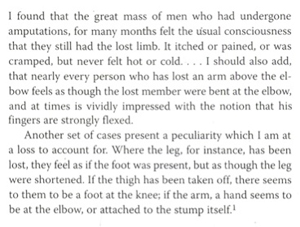
Figure 2. Text extracted from Silas Weir Mitchell’s publications about phantom limb pain (syndrome).
SWM published many scientific papers, his neurologic practice thrived and he found time to write “Wear and Tear: Hints for the Overworked” (1871). It sold out in 10 days, and four other editions were published. He also published “Fat and Blood” (1877). Eight editions were published. He married Mary Middleton Elwyn in 1858, and she bore two sons. Tragically, they both died of diphtheria in 1862. He remarried Mary Caldwalder from a socially prominent Philadelphia family in 1874. That same year, he lost his sister, to whom he was very close, also to diphtheria. Yet another family tragedy included the loss of a daughter from his second marriage whom he doted on. She was 22 years old. This prompted his publication of a poem, “Ode to a Lycian Tomb,” which again for that period became quite popular13.
As was the custom at that time, prominent Philadelphians traveled north for the summer months, and SWM’s family was no exception. Initially, they summered in Newport, Rhode Island, and subsequently in Maine and occasionally Canada. SWM was an avid reader, and on these lengthy sojourns, he soon ran out of fiction to read so he began to write novels himself. His first book, “In War Time” (1884) was initially published in 12 issues of the Atlantic Monthly. Beginning in his 50s, he began to write and publish 13 novels, mainly about society at that time in Philadelphia and the effect of conflicts such as the Civil War and the American and French Revolutions on civilian life2. (See Figure 3.)
SWM had developed a keen interest in mental disorders, and he used that in a very descriptive way with his fictional characters. His literary detractors even extolled that trait, but faulted his lack of substantial plots or at least ones that moved along. He did tend to emphasize the genteel in society instead of the common man. He ignored or failed to develop any fictional, sexual encounters or connotations5,8. Despite these criticisms about plots, one can find distinct exceptions among these novels. Thus, substantial plots at least for this reader can be found in “The Adventures of Francois — a French Revolution Juggler and Thief” (1897) or “Hugh Wynne. Free Quaker: Sometime Brevet Lieutenant — Colonel on the Staff of His Excellency General Washington” (1896) and “Constance Trescott” (1905). “Constance Trescott” portrays a vengeful widow who moves to Missouri from New England shortly after the Civil War.
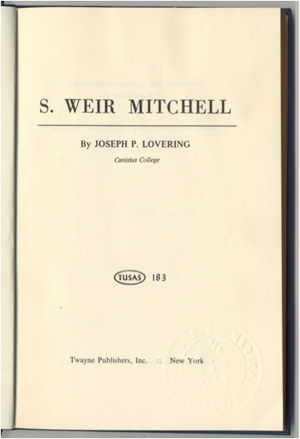
Figure 3. The frontispiece of J.P. Lovering’s “S. Weir Mitchell,” published in 1929 by Twayne Company, New York.
Despite moving into the top social circles in Philadelphia, SWM treasured his medical and fictional authorship more than social pleasures. Perhaps in part because of his social status though as well as his popularity as a physician, he was made a trustee at Penn in 1875 and helped found a Department of Mental Diseases, mentoring two subsequent chairs — Mills and Burr7. He recruited William Osler from Canada to the chair of the Medicine Department and even helped his son obtain an academic appointment, something he had always cherished for himself but never gained at least as a chair at either Penn or Jefferson.
Mitchell became president of the Association of American Physicians (1887), president of the American Neurological Association (1908-1909) and was given honorary degrees at Harvard, Edinburgh, Princeton and Toronto before dying of influenza in January 19141. He was buried in the Philadelphia area in the Woodland Cemetery16.
Along with Benjamin Rush, SWM is considered the father of neurology in America4. Some described him as pompous and dictatorial, and as he grew older, somewhat irascible but “as a young man he took first place among the physiologists of the day, in middle age first among physicians, and as an older man, he was among the novelists of his country14.” (See Figure 4.)
This paper was presented June 9, 2014, to the 86th dinner meeting of the Philadelphia Neurological Society founded 134 years ago by Silas Weir Mitchell. •
References
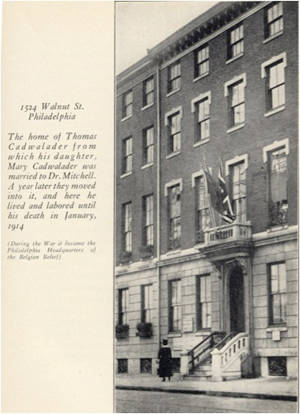
Figure 4. Mitchell’s final home with Mary Caldwalder, 1524 Walnut Street, Philadelphia. On this home was mounted a brass plaque commemorating his many lifetime accomplishments.
1. Bailey P: A biographical memoir of Silas Weir Mitchell (1829-1914), National Academy of Sciences Publication pp 332-53, 1958
2. Burr AR: “Silas Weir Mitchell: His Life and Letters,” Duffield Co, NY, NY, 1929
3. Cervetti N: “Silas Weir Mitchell (1829-1914): Philadelphia’s Literary Physician,” Pennsylvania State University Press, 2012
4. Drabelle D: The Case of Silas Weir Mitchell, Penn Gazette, pp 40-3, Nov-Dec 2012
5. Finger S, Hustwit MP: Five Early Accounts of Phantom Limb in Context: Pare,Descartes, Lemos, Bell, and Mitchell, Neurosurgery 52:675-86,2003
6. Lau FH, Chung KC: Silas Weir Mitchell MD: The Physician Who Discovered Causalgia, J. Hand Surg (Am) 29(2): 181-87, 2004
7. Ledger M: Benjamin Rush and 20 Years of Penn Psychiatry, Penn Medicine, pp22-33, Fall 2012
8. Lovering JP: “Silas Weir Mitchell: His Life and Letters,” Twayne Pub. NY, 1929
9. Miller E: Truth, Stranger Than Fiction, Silas Weir Mitchell and Phantom Limbs, Pharos Autumn, 2011
10. Mitchell SW: “Researches Upon the Venom of the Rattlesnake: With an Investigation of the Anatomy and Physiology of the Organs Concerned,” Smithsonian Institution, Washington, DC
11. Mitchell SW: Remarks on the Effects of Anhelonium Levinii (The Mescal Button) BMJ 21:1625-29,1875
12. Mitchell SW: On a Rare Vasomotor Neurosis of the Extremities and on Maladies With Which it May Be Confounded, Am J Med Sci 76:17-36, 1878
13. Mitchell SW: “Ode on a Lycian Tomb,” The Century Magazine, LXXV (1), 85-88, 1907
14. Nome de Plume (SWM): The Strange Case of George Dedlow, Atlantic Monthly 18(105):1-11, 1866
15. Rein D: “Silas Weir Mitchell as a Psychiatric Novelist,” International University Press Inc, NY,NY 1967
16. Toodayan N: “Silas Weir Mitchell (1829-1914): The Man and his Malady,” Love of Books, Brisbane, Australia, 2014
Kline is the Emeritus Chair and Boyd Professor, Louisiana State University Medical Center, New Orleans, Louisiana.
